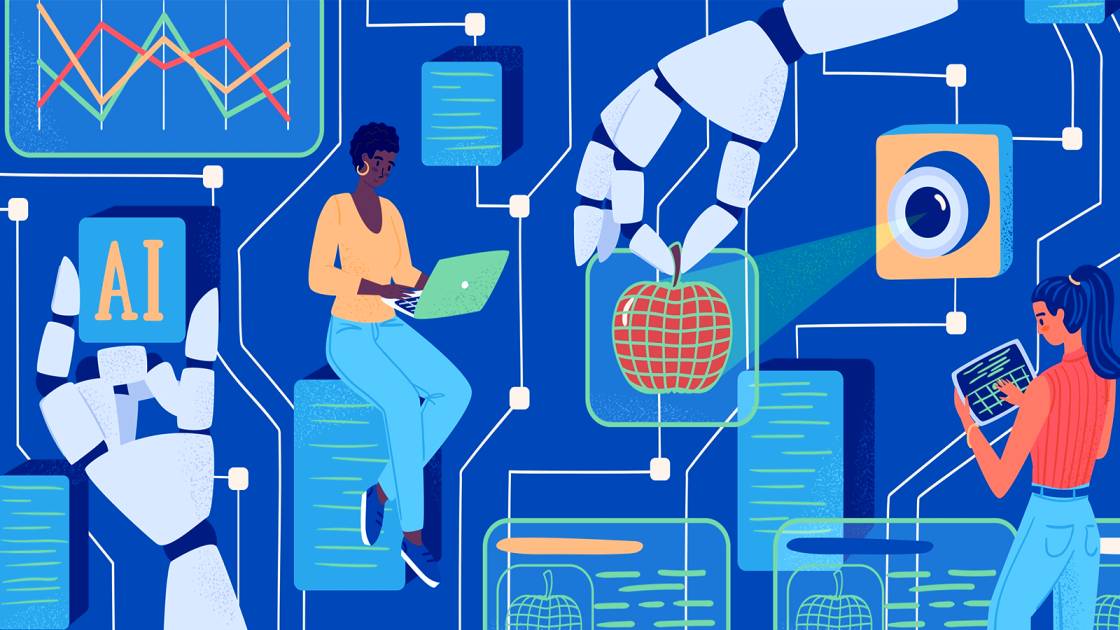The way companies operate is being fundamentally altered by artificial intelligence use in the sector. Companies using artificial intelligence technology into their operations want to save money, increase efficiency, provide insights, and create new markets.
AI-powered business applications abound to improve customer service, boost sales, sharpen cybersecurity, streamline supply chains, free up people from menial chores, enhance current goods and point the path to new ones. It is difficult to imagine a business where artificial intelligence, the emulation of human activities by technology, particularly computer systems, won't have an influence. Nonetheless, company executives resolved to apply artificial intelligence to enhance their companies and guarantee a return on their investment encounter difficult obstacles from several angles:
From what sources did artificial intelligence first arise
Often dating the contemporary science of artificial intelligence to 1956, the phrase was first used in the proposal for an academic conference hosted at Dartmouth College that year. But the belief that the human brain might be automated is firmly ingrained in human history.
Stories and traditions, for instance, abound in monuments that come to life. Many prehistoric societies constructed humanlike automaton thought to have reason and feeling. Philosophers from all around the world were developing techniques for formal reasoning by the first millennium B.C.; this effort was sustained over the next 2,000-plus years by others including theologians, mathematicians, engineers, economists, psychologists, computational scientists and neurobiologists.
These are some benchmarks in the protracted and elusive search to replicate the human brain:
- The ascent of the contemporary computer.The first concept for a programmed machine was created in 1836 by Charles Babbage and Augusta Ada Byron, Countess of Lovelace, therefore defining the prototype for the modern computer. Princeton mathematician John von Neumann first proposed the design for the stored-program computer a century later, in the 1940s: this was the theory that the program and data a computer runs might be retained in its memory.
- Birth of the neural network.Published in 1943 by the computational neuroscientists Warren McCulloch and Walter Pitts in their seminal paper, "A Logical Calculus of Ideas Immanent in Nervous Activity," the first mathematical model of a neural network—arguably the foundation for today's largest achievements in artificial intelligence—was presented.
- Test of Turing:British mathematician Alan Turing investigated whether machines may show humanlike intelligence in his 1950 work "Computing Machinery and Intelligence." Named for an experiment suggested in the article, the Turing Test examined a computer's capacity to trick interrogators into thinking its answers to their queries were generated by a human being.
- historic gathering in New Hampshire.Sponsored by the Defense Advanced Research Projects Agency, or DARPA, a 1956 summer meeting at Dartmouth College brought together eminent experts in this newly emerging subject Among the group were John McCarthy, Oliver Selfridge, and Marvin Minsky, who helped to define the phrase artificial intelligence. Attending also were AI notables Allen Newell and Herbert A. Simon, who introduced their revolutionary Logic Theorist -- a computer program able to prove some mathematical theorems and dubbed the first artificial intelligence program.
Read also: How to choose the right enterprise software for your business
Artificial intelligence, or AI? AI operates in what way
Many of the jobs carried out in the company call for some degree of intelligence rather than robotic performance. Especially in the context of employment, what defines intelligence is not clear-cut. Broadly defined, intelligence is the ability to absorb knowledge and use it to accomplish an objective; the action made is tied to the particulars of the circumstance rather than done by rote.
Usually, artificial intelligence refers to getting a machine to operate in this way. As a final assessment released in 2016 by the U.S. government's National Science and Technology Council (NSTC) points out, there is no one clear or basic definition of artificial intelligence.
"Some describe artificial intelligence (AI) as a computerized system displaying actions usually considered as requiring intellect. Others describe artificial intelligence as a system able of logically addressing difficult issues or acting in line to reach its objectives in any real world environment it comes across," the NSTC report said.
The four forms of artificial intelligence are what
From AI systems able of basic categorization and pattern recognition tasks to systems able of leveraging historical data to create predictions, modern artificial intelligence developed from Driven by a revolution in deep learning—that is, artificial intelligence learning from data via neural networks—machine intelligence has evolved quickly in the 21st century to produce such breakthrough products as self-driving cars, intelligent agents like Alexa and Siri, and humanoid conversationalists like ChatGPT.
Also known as limited or weak artificial intelligence, the forms of AI that exist presently include those that can drive vehicles or defeat a world champion in the game of Go. While lacking general intelligence, narrow artificial intelligence types exhibit savant-like ability for some jobs. Still under development is the sort of artificial intelligence capable of human-level consciousness and intellect.
Read also: Department Of Small Business Development Funding
Reactive AI
Early forms of artificial intelligence rely on reactive algorithms devoid of memory; that is, given a particular input, the result is always the same. For straightforward categorization and pattern recognition chores, machine learning models applying this kind of artificial intelligence are successful. They can examine vast amounts of data and provide an apparently intelligent result, but they cannot examine situations requiring historical knowledge or include incomplete information.
Restricted memory devices
Limited memory machines' basic algorithms are meant to replicate the way our neurons link and are based on our knowledge of how the human brain functions. This kind of machine or deep learning can complete challenging activities include autonomous driving and use previous data to generate predictions; it can also do difficult categorization chores.
Although restricted memory machines are categorized as having narrow intelligence as they lag behind human intelligence in some ways, they are able to significantly outshine normal human performance in some activities. They are sensitive to outliers or hostile instances and need enormous volumes of training data to perform tasks humans can learn with only one example, or few. Claims that artificial intelligence models grasp the world and hence have theory of mind come from the remarkable language capabilities of conversational artificial intelligence chatbots and humanlike behavior of other advanced cognitive computing systems. Still, most people agree existing technologies are far from human intellect.
Theory of mind
This kind of as-yet hypothetical artificial intelligence is characterized as able to comprehend human intentions and reasoning and thus able to provide customized results depending on an individual's motives and wants. Also also known as artificial general intelligence, philosophy of mind Unlike limited memory computers, artificial intelligence can learn from few instances. It can generalize knowledge and arrange facts to address a wide spectrum of issues.The next major turning point in the development of artificial intelligence is emotion artificial intelligence, or the capacity to identify human emotions and sympathize with humans; the present systems lack theory of mind and are rather distant from self-awareness.
AI with self-awareness.This kind of artificial intelligence knows not only the mental condition of other creatures but also of itself. Artificial superintelligence, often known as self-aware AI, is described as a computer having intelligence on par with human general intellect and in principle able of far beyond human cognition by generating ever more intelligent copies of itself. But not enough is known about the way the human brain is structured to create an artificial one that is either as, or more, intelligent generally.










